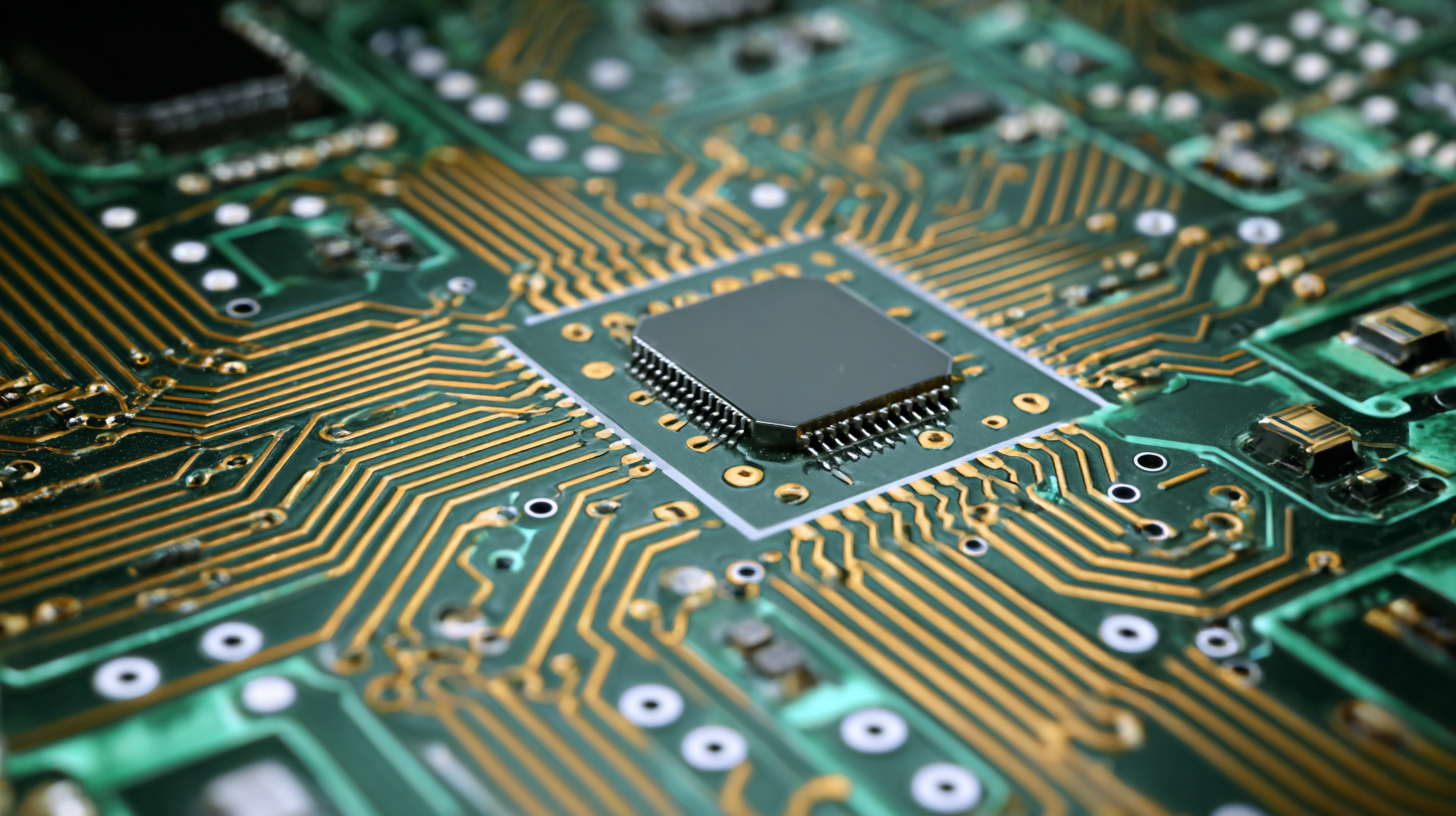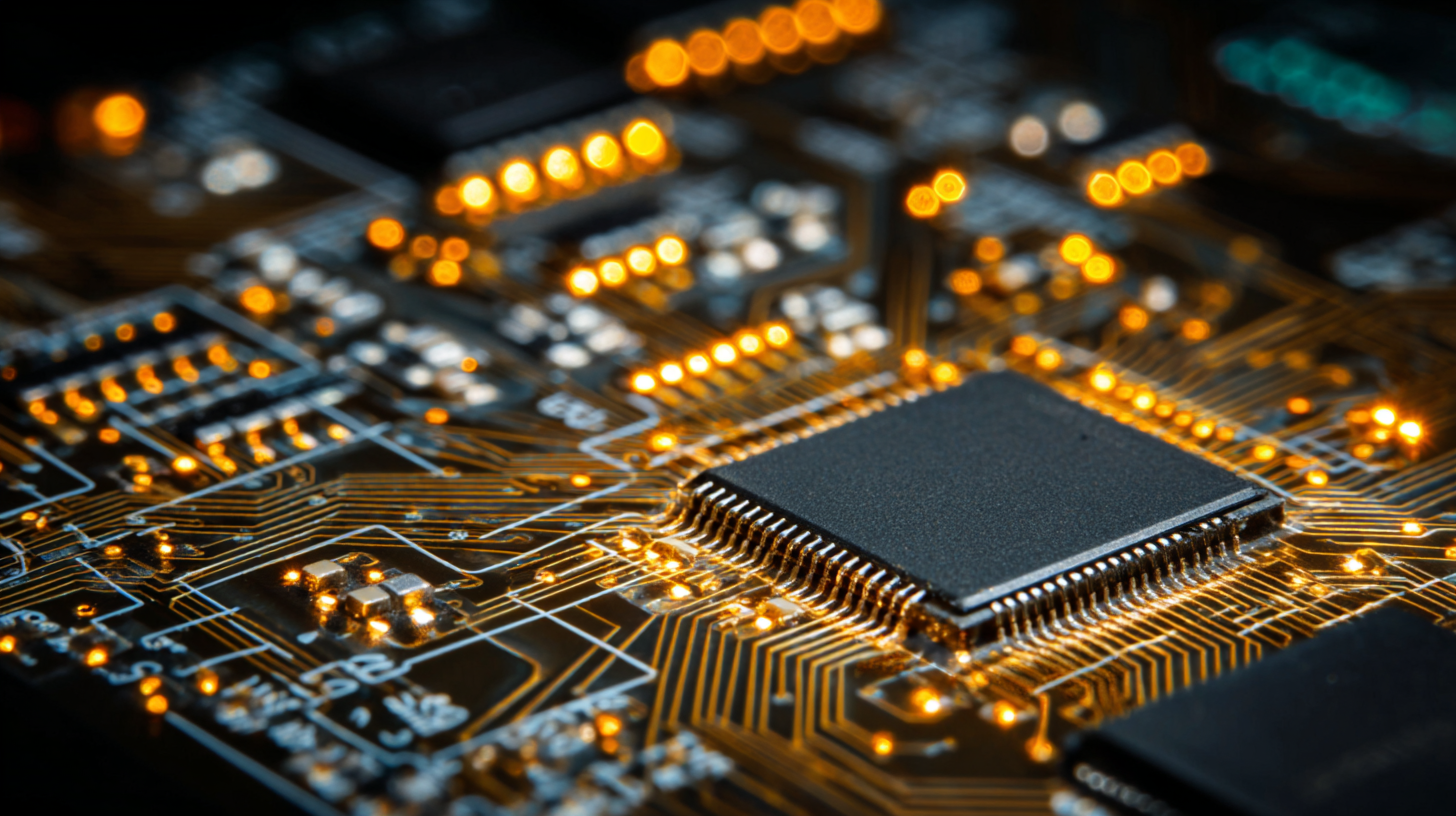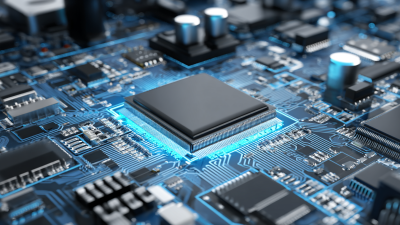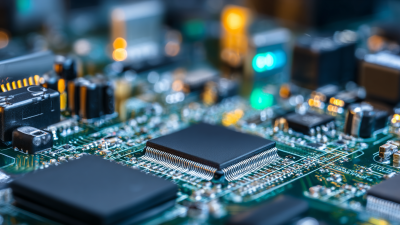As we move towards 2025, the flexible PCB industry is witnessing remarkable innovations that are reshaping the landscape of electronics. In this highly competitive market, keeping abreast of the latest trends and growth statistics is crucial for stakeholders. Dr. Emily Chen, a leading expert in flexible PCB technology, once stated, "The future of electronics lies in flexibility; flexible PCBs are not just components but enablers of next-generation devices." This perspective underscores the importance of adaptability and design freedom that flexible PCBs provide.
In recent years, flexible PCBs have evolved significantly, showcasing advancements in materials, manufacturing processes, and applications across various sectors such as consumer electronics, medical devices, and automotive technology. The upcoming trends highlight a shift toward even more innovative solutions, including multi-layered designs, enhanced thermal management, and eco-friendly manufacturing practices. As the demand for compact, lightweight, and efficient electronic devices continues to rise, the flexible PCB market is poised for substantial growth, making it essential to explore the top innovations set to lead the industry by 2025.

 In 2025, advancements in material technologies for flexible printed circuit boards (PCBs) are set to revolutionize the electronics industry. As devices become increasingly compact and versatile, the demand for materials that can withstand extreme flexibility and bending without compromising performance has surged. Innovations in polymer substrates, such as thermoplastic polyimides, provide enhanced durability and thermal resistance. These materials not only improve the longevity of flexible PCBs but also support the miniaturization of electronic components, making them ideal for applications in wearables and IoT devices.
In 2025, advancements in material technologies for flexible printed circuit boards (PCBs) are set to revolutionize the electronics industry. As devices become increasingly compact and versatile, the demand for materials that can withstand extreme flexibility and bending without compromising performance has surged. Innovations in polymer substrates, such as thermoplastic polyimides, provide enhanced durability and thermal resistance. These materials not only improve the longevity of flexible PCBs but also support the miniaturization of electronic components, making them ideal for applications in wearables and IoT devices.
Moreover, the integration of conductive inks and inks made from advanced materials like graphene is propelling the performance of flexible PCBs to new heights. These innovations facilitate the production of lighter and thinner circuits that exhibit superior conductivity and flexibility. Additionally, the development of environmentally friendly materials is gaining momentum, aligning with the industry's push for sustainability. Manufacturers are increasingly focused on eco-friendly processes and recyclable materials, ensuring that the flexible PCB market grows in a responsible and future-oriented manner. This combination of performance enhancement and sustainability is essential for meeting the evolving needs of consumers and industries alike.
The integration of AI and IoT in flexible PCB design and production is heralding a new era of innovation in the electronics manufacturing landscape. With the Flexible Printed Circuit Board (FPCB) market projected to soar from USD 24.6 billion in 2024 to USD 70.4 billion by 2035, companies are increasingly leveraging advanced technologies to enhance design processes and production efficiency. AI algorithms can optimize circuit designs, reducing errors and increasing performance while IoT devices facilitate real-time monitoring of production lines, ensuring quality and speed.
Tips for implementing these technologies include starting small with pilot projects that incorporate both AI and IoT to familiarize your team with their capabilities. Moreover, investing in training programs tailored to these new technologies can enhance workforce skills and foster innovation. It's crucial to foster a culture of flexibility and adaptability, allowing teams to experiment with new designs and production methods effectively.
As the smart manufacturing market continues to attract significant investment—with projections exceeding USD 600 billion by 2030—the role of flexible PCBs will only grow. Emphasizing sustainability in manufacturing processes can also create a competitive advantage, as consumers increasingly prioritize eco-friendly products. This dual focus on innovation and sustainability can position companies to thrive in the rapidly evolving electronics market.

The demand for flexible printed circuit boards (PCBs) is significantly influenced by the miniaturization trend across various industries, enabling enhanced efficiency and reliability. This trend is particularly prevalent in sectors such as automotive and consumer electronics, where the need for compact, lightweight solutions is paramount. The automotive printed circuit board market alone is projected to grow from USD 10.98 billion in 2025 to approximately USD 18.14 billion by 2034, highlighting the increasing integration of advanced electronics in vehicles, from infotainment systems to advanced driver-assistance systems (ADAS).
Moreover, the flexible electronics market is expected to expand from USD 44.0 billion in 2025 to USD 99.0 billion by 2035, with a robust compound annual growth rate (CAGR) of 8.5%. This growth reflects the rising demand for flexible and adaptable electronic components that can meet the evolving needs of various applications, including wearables, smart devices, and medical technology. Additionally, the rigid flex PCB segment in China is forecasted to display a CAGR of 12.4%, further indicating the robust advancements in PCB technology that cater to the growing electronics market's requirements.
The flexible printed circuit board (FPCB) industry is increasingly prioritizing sustainability in its manufacturing processes, driven by both regulatory pressures and consumer demand for eco-friendly products. According to a recent report by MarketsandMarkets, the global flexible PCB market is expected to reach USD 25.7 billion by 2025, emphasizing the importance of incorporating sustainable practices. Innovations in materials, such as bioplastics and recyclable substrates, are emerging as key trends that not only reduce the environmental footprint but also enhance product performance.
Moreover, companies are adopting strategies to minimize waste during production. The implementation of closed-loop recycling systems can significantly reduce the amount of hazardous waste generated. A study from the IPC indicates that about 30% of waste in FPCB manufacturing can be recycled effectively, which not only aligns with sustainability goals but also contributes to cost savings. Additionally, advancements in manufacturing technology are enabling the use of cleaner production methods, which further support the industry's shift toward a more sustainable future. As flexible PCBs become essential components in various applications from consumer electronics to automotive, their sustainable manufacturing will play a crucial role in meeting the growing market demand while addressing environmental concerns.
The flexible printed circuit board (FPCB) market is experiencing a significant transformation, particularly in the consumer electronics and automotive sectors. With the increasing demand for lightweight, compact, and versatile electronic components, flexible PCBs are becoming indispensable in the design of modern gadgets. In consumer electronics, FPCBs enable the development of slimmer devices, such as smartphones, wearables, and smart home products, allowing designers to fit more capabilities into smaller spaces. This trend is fueled by the necessity for seamless integrations and advanced functionalities, making FPCBs a vital part of next-generation devices.
In the automotive industry, flexible PCBs are playing a crucial role in enhancing vehicle performance and safety. As electric vehicles (EVs) and autonomous driving systems become more prevalent, the need for reliable, flexible electronic connections has skyrocketed. FPCBs can be found in various applications, including sensor systems, infotainment, and advanced driver-assistance systems (ADAS). These innovations not only improve reliability and reduce weight but also contribute to the overall efficiency of electric vehicles. As technologies continue to evolve, the adaptability and efficiency of flexible PCBs will likely drive their adoption further, making them central to future advancements in both consumer electronics and automotive applications.






| Cookie | Duration | Description |
|---|---|---|
| cookielawinfo-checkbox-analytics | 11 months | This cookie is set by GDPR Cookie Consent plugin. The cookie is used to store the user consent for the cookies in the category "Analytics". |
| cookielawinfo-checkbox-functional | 11 months | The cookie is set by GDPR cookie consent to record the user consent for the cookies in the category "Functional". |
| cookielawinfo-checkbox-necessary | 11 months | This cookie is set by GDPR Cookie Consent plugin. The cookies is used to store the user consent for the cookies in the category "Necessary". |
| cookielawinfo-checkbox-others | 11 months | This cookie is set by GDPR Cookie Consent plugin. The cookie is used to store the user consent for the cookies in the category "Other. |
| cookielawinfo-checkbox-performance | 11 months | This cookie is set by GDPR Cookie Consent plugin. The cookie is used to store the user consent for the cookies in the category "Performance". |
| viewed_cookie_policy | 11 months | The cookie is set by the GDPR Cookie Consent plugin and is used to store whether or not user has consented to the use of cookies. It does not store any personal data. |